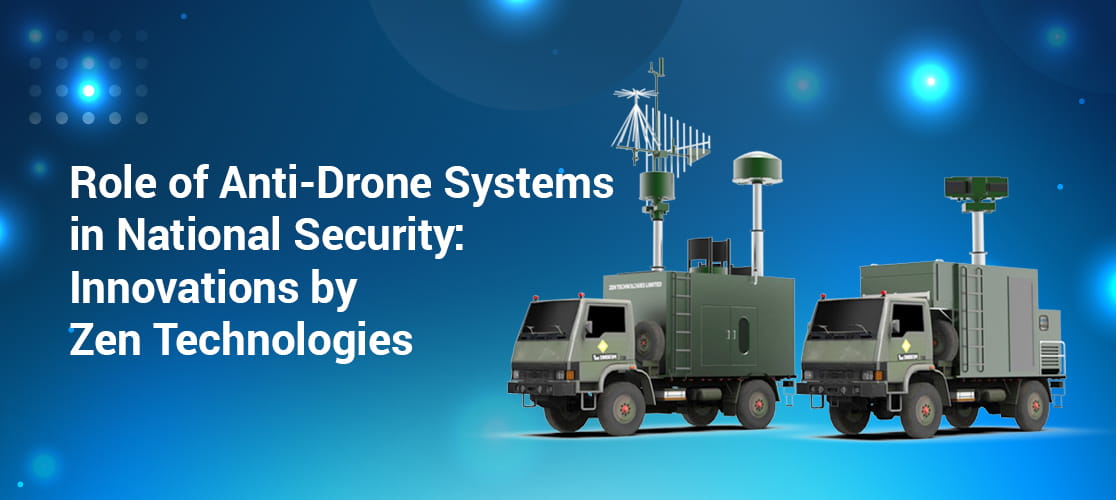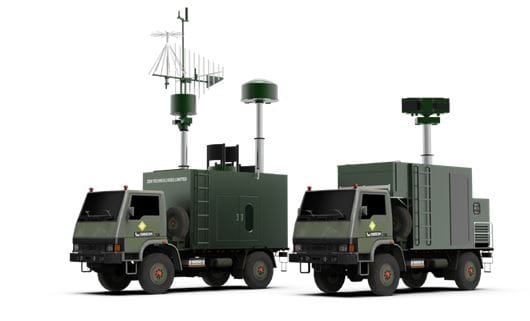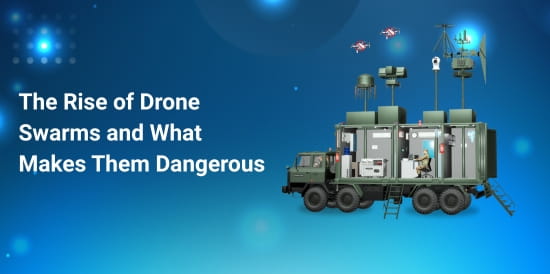
Modern warfare has entered an era where the most dangerous threats are often silent, unmanned, and autonomous. On March 11, 2025 , Ukraine launched its largest drone attack on Moscow, resulting in at least two fatalities and multiple injuries. Over 60 drones were intercepted in the Moscow region, while a staggering 337 UAVs were reportedly shot down across Russia. The attack disrupted international airports, damaged high-rise buildings, and underscored the ability of drones to strike deep into enemy territory—turning them into both a tactical weapon and a tool of psychological warfare. But drones are not just a threat to military installations; they also endanger critical national assets. The 2019 Abqaiq-Khurais attack in Saudi Arabia demonstrated how a well-coordinated drone strike could cripple a nation’s economic backbone in minutes. The ability to target energy infrastructure, defence installations, and key economic hubs makes drones a serious concern for both national security and economic stability.
From the Russia-Ukraine war, where loitering munitions and kamikaze drones like the Shahed-136 and FPV have decimated armoured columns, to Iran-backed drone strikes against Israel, UAVs have repeatedly proven their ability to bypass traditional defences and inflict severe damage. Even outside conventional battlefields, non-state actors and smuggling networks use drones to breach borders, transport contraband, and conduct espionage.
Traditional air defence systems struggle to keep up—underscoring the urgent need for specialized anti-drone systems.
Why Traditional Air Defence Systems Fail Against Modern Drones
Air defence systems were originally designed to detect and intercept large, fast-moving aerial threats like fighter jets and ballistic missiles. However, modern drones are built to evade detection and counter conventional defence strategies, exposing critical vulnerabilities in existing air defence networks. Their stealth capabilities, electronic warfare resilience, and unpredictable flight patterns make them difficult to track and neutralize. These evasive tactics are not accidental; they are engineered. Here are the core factors that make modern drones so difficult to detect and intercept:
- Stealth & Low Radar Cross-Section :
Many advanced UAVs are built using radar-absorbing materials and aerodynamic designs to minimize their radar signature. The Russian S-70 Okhotnik, a heavy stealth UCAV, is specifically designed to penetrate enemy defences while remaining nearly invisible to conventional radar systems. Similarly, the U.S. RQ-180 reconnaissance drone operates at high altitudes with an ultra-low observable profile, making it difficult to track even with advanced radar. - Low & Slow Flight Profiles :
Unlike jets or missiles, drones often fly at extremely low altitudes and at slow speeds, blending into ground clutter and civilian air traffic. Traditional radar systems, optimized for fast, high-altitude threats, struggle to differentiate between a small drone and background noise. The Shahed-136 loitering munition, used extensively in Ukraine, exploits this weakness by flying at low altitudes for extended periods, making it hard to detect until it’s too late. - Swarm Attacks & AI Coordination :
Some drones now operate in coordinated swarms, using AI-driven algorithms to overwhelm enemy defences. This makes conventional interception strategies ineffective, as traditional air defence systems are designed to engage only a limited number of simultaneous threats. The Turkish Bayraktar Kızılelma, an AI-driven jet-powered drone, can coordinate with other UAVs in combat, making it significantly harder to neutralize through conventional means. - Electronic Warfare & Jamming Resistance :
Many modern UAVs come equipped with electronic warfare capabilities, including GPS spoofing, frequency-hopping communication, and resistance to jamming. This allows them to bypass radar-based tracking and electronic surveillance. The Iranian Shahed-136 and the Russian S-70 Okhotnik have demonstrated strong electronic warfare resilience, making them difficult to disable through traditional electronic countermeasures.
This growing challenge has forced militaries worldwide to rethink their approach. With drones becoming increasingly sophisticated and harder to detect, relying solely on conventional defences is no longer a viable option. This is where next-generation anti-drone technologies like Vyomkavach become indispensable. Unlike outdated systems that struggle against modern UAV threats, Vyomkavach is specifically engineered to detect, track, and neutralize drones using a multi-layered defence approach
Vyomkavach: Zen Technologies’ Advanced Anti-Drone Shield

Modern drone threats demand a new kind of defence—one that goes beyond conventional radar tracking and missile interception. While the traditional Air Defence Umbrella is constantly evolving to meet the emerging threats, the gap between the Air Defence and drones keeps increasing. Here is where the modern anti-drone systems step in and bridge the gap. An advanced anti-drone system must not only detect and identify UAV threats but also predict their movement, counteract their evasive tactics, and neutralize them before they cause damage. This requires a multi-layered approach, combining high-speed sensors, adaptive electronic warfare, and precision-targeting capabilities to ensure drones are eliminated at every stage of engagement.
Recognizing the urgent need for specialized drone protection, Zen Technologies has developed Vyomkavach which embodies this next-generation defence philosophy. Vyomkavach is built to detect, track, and neutralize UAV threats with unparalleled accuracy. Unlike conventional air defence platforms designed for traditional aerial threats, Vyomkavach is purpose-built to counteract the agility, stealth, and unpredictability of modern drones.
Operational Capabilities of Vyomkavach:
- Multi-Sensor Detection & Tracking
- Smart Sensor Fusion: Integrates multiple detection technologies to track drones in real-time, minimizing false positives and enhancing accuracy.
- Long-Range Radar & RF-Based Surveillance: Identifies threats early, ensuring drones are intercepted before reaching critical assets.
- Electro-Optical/Infrared (EO/IR) Systems: Provides day-and-night tracking capabilities, even in cluttered environments.
- Advanced Threat Neutralization
- Electronic Warfare (Soft Kill): Jamming and spoofing disrupt enemy drones, severing communication and navigation links.
- Hard Kill Capabilities: Deploys kamikaze drones, micro-missiles, and remote-controlled weapon platforms for direct interception.
- Kinetic Interceptors: Engages fast-moving drone swarms, ensuring comprehensive defence of strategic assets.
- Seamless Integration with Air Defence Systems
- Vyomkavach is not a standalone system—it integrates seamlessly with existing air defence networks to create a unified protection ecosystem.
- It provides both autonomous and operator-controlled modes, allowing for adaptive responses in dynamic combat environments.

The Future of Air Superiority: Counter-Drone Warfare
The battlefield is evolving at an unprecedented pace, and drones have already proven to be one of the most disruptive forces in modern warfare. Conventional air defence systems, originally designed to counter fighter jets and ballistic missiles, were never built to tackle small, agile, and unpredictable UAVs.
For defence forces and national security agencies, delaying the adoption of counter-drone solutions is no longer an option. Zen Technologies’ Vyomkavach represents the cutting edge of airspace security, offering nations a decisive advantage against evolving drone threats. To secure your airspace against the next wave of drone warfare, consider integrating Zen Technologies’ advanced anti-drone solutions into your defence strategy today.





Leave feedback about this